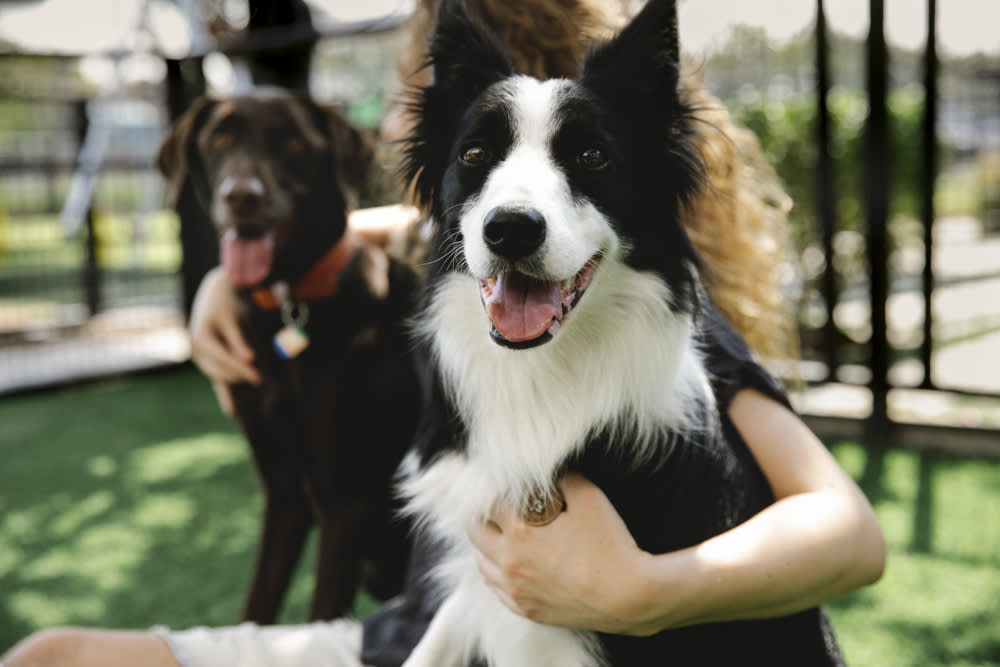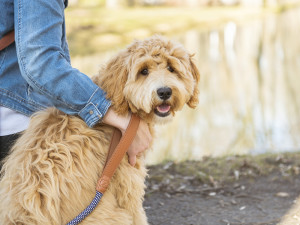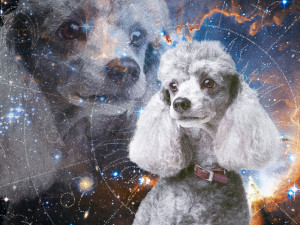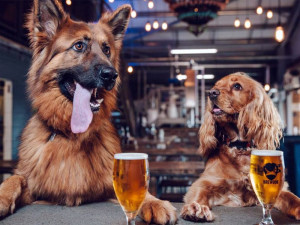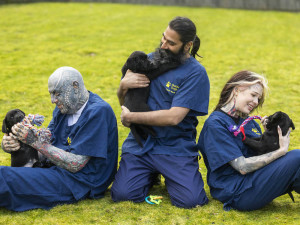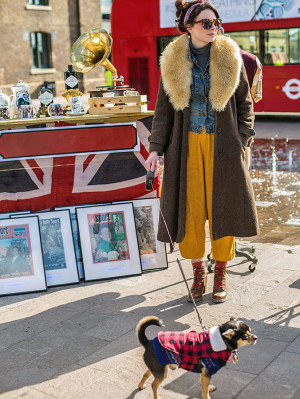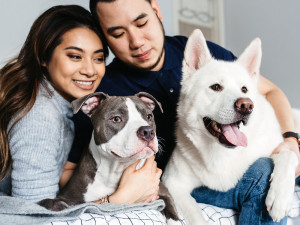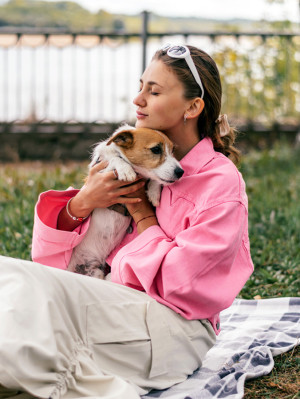Why Breed Standards Don’t Work
Breeders, judges and historians talk about breed standards – learn how they’re supposed to work and why they don’t
Of the 400 breeds recognised worldwide today, more than two-thirds were created in the last 150 years. There’s no doubt that dog breed shows, like Crufts, and their requisite breed standard for appearance played a big part in subdividing breeds, shrinking gene pools and diminishing genetic diversity. Learn how breed standards have influenced how we regard, understand and think about dogs.
Unfolding dog genetics
In the world of mammals, the domestic dog – a subspecies of the grey wolf – reigns as the most morphologically diverseopens in new tab. On one end, there’s the 70kg South Russian Ovcharka, and on the other, the 3kg Silky Terrier. This incredible variety can be attributed partly to the dog’s basic template, which can be customised by manipulating an unexpectedly small number of genes.
For instance, 95 percent of all fiveopens in new tab canine fur textures and lengths (the Afghan Hound and Curly-Coated Retriever curiously excepted) are orchestrated by three genes. And just six or seven locations in a dog’s genome account for nearly 80 percent of dogsopens in new tab’ vast size and weight differences. (In humans, these genes number in the hundreds, if not thousands). A single mutation, shared by 14 diminutive breeds, determines that a dog will be small, and another is responsible for the long-bodied, short-legged nature of many dwarf breeds.
Clearly, dog breeds aren’t quite as unique as you might have thought. Dog traits come in packages. Flip a switch to make the legs more slender, and the skull will narrow as well. Turn down the volume on pigment and the chance of deafness increases.
Get (totally free) deals for food, treats, accessories, tech and way more pet parenting must-haves.
Those who bred dogs had long known that traits were related, but there was little understanding of how those relationships worked; nor was there much concern. Dogs were bred for skills useful in a practical world. Once breed exhibitions became fashionable and working dogs were awarded championships based strictly on appearance, all this changed.
Associating breed and behaviour
In 1866, John Henry Walsh (writing under the pseudonym ‘Stonehenge’), editor of The Field – the most influential hunting and kennel journal in England – was the first to describe a breed’s physical characteristics with phrases that he believed were equivalent to its field ability. A bird dog judged perfect to a well-written breed standard would, by the logic of the day, perform perfectly in the field.
At the time, horsemen and sportsmen were the dog influencers (women became active later), and many of the arcane descriptions in breed standards are borrowed from those fields. Today, breed standards serve three purposes: assessment in competition; delineation of unique qualities in different breeds, some very much alike; and maintenance of breed similarity throughout the world.
The question is, what happens to purebred dogs when language is used to suspend change in morphology and behaviour? We spoke with experienced American Kennel Club (AKC) breeders, specialty judges and breed historians to gain some insight into specific ways that a standardised lexicon can influence change in pedigreed dogs far beyond what is intended.
Dogs in translation
Breed standard translations are more like corrections or clarifications. When standards are clarified, they usually get longer and, consequently, more exclusive. A standard that calls for feet to be ‘round, compact, catlike, standing well upon the toe pads’, is more restrictive than one that says feet must be ‘close, round and firm’. Revisionists tread cautiously because an imprecisely rephrased standard can have an impact on a breed’s genetic diversity.
Amending a standard for any reason is controversial. As one Greyhound breeder observed, “The torch handed to us was the perfect coursing dog. Our standard is taken word for word from what was written in the 1860s. If we added more words to make it more explicit, it may end up being a Greyhound different than the one each one of us has in our head.”
But progress necessitates change. A handful of words differentiate an apple, an orange, or a pear, but 13 varieties of apples require a larger lexicon. In his 1576 treatise, Of Englishe Dogges: The Diversities, the Names, the Natures, and the Properties, cynologist John Caius described the generic land Spaniel in 58 words: “The most part of their skins are white and if they be marked with any spots, they are commonly red, and somewhat great therewithal, the hairs not growing in such thickness but that the mixture of them may easily be perceived. Other some of them be reddish and blackish, but of that sort there be but a few.” Today, Caius’s dog has morphed into 13 flushing Spaniel breeds. The Field Spaniel standard uses 973 words, short in comparison to the English Springer Spaniel standard, a 2,040 word descriptor.
Occasionally, words are added to explain what something is not. As one breed standard committee member noted, “There were lots of questions from judges about the preferred shape of the eye opening. So we said it’s acceptable as long as it’s not this, that, or the other thing.” And at a California dog show, pointing to Mastiffs benched only a few feet from his St Bernards, an exhibitor told me, “Sometimes breed clubs have to lengthen standards to differentiate their breeds from others so similar that, if marked differently, could be shown as Saints.”
When words fail
At the Westminster dog show, AKC VIPs talked candidly about breed standards. A Doberman breeder, specialty and all-breed judge said: “When people bred to the standard, the animal changed and became what the words described. Also, some groups wrote the standard and have not been able to breed to that ideal, so now, they change the nuance of the words to fit the breed ideal. Making the dogs fit the words, and not vice-versa, is wrong.”
Sometimes breed standards include terms that are subjective or indefinite. Or as one judge said, “If the standard calls for a short muzzle, judges select dogs based on the shortest muzzles in the ring. The breed’s muzzle gets shorter and shorter. So you have to ask, ‘Shorter than what?’” This leads to the problems currently associated with brachycephalic breeds.
Some breeders get so fixated on one attribute of the traditional standard that they are willing to sacrifice something more important. “For example, they may create a broad head but are willing to accept shorter legs and a longer back in order to do so,” another judge observed.
Breed standards, like all nomenclature, are subject to the rules of language. Like the dog it describes, vocabulary is deceptively capricious and unexpectedly fluid. A good example is size. Big breeds are getting bigger. As I was told by a breed historian in reference to St Bernards, “What was bred to be powerful and strong in 1900 would not be considered powerful and strong today. Like an automobile in 1915, it was powerful then but not compared to now.” If a standard describes a breed as strong and powerful, the ideal dog gets bigger.
Rather than hack away at standards, some breed clubs hold seminars for judges in which contemporary nuances of an indefinite vocabulary are refined. Others reluctantly reword phrases to accommodate inexperienced newcomers. Some clubs don’t revise words, but instead, reinterpret their meanings. Take English Bulldogs, for example. As an owner of one of these stocky dogs remarked, “The interpretation of words has changed. The Victorian Bulldog was a transition dog, less bulky, less massive, taller, leaner, and is now thicker and more compact.”
Another handler observed that “one of the issues in the standard is weight. It calls for 20–22kg. But it has no height restriction, so a higher-station dog might be thinner.” The 1910 dog was a much taller and leaner dog compared to today’s stout fireplug variety, but both are considered to have been bred correctly to the standard.
You can have the same words in several breed standards, but that don’t mean the same thing. Take the word ‘almond-shaped’ to describe the eyes of a German Shepherd Dog – if you look at other breed standards, both the Collie and American Cocker Spaniel call for almond-shaped eyes. Even though the Collie has a small triangular eye and Cocker Spaniel’s eye bulges out from the skull.
